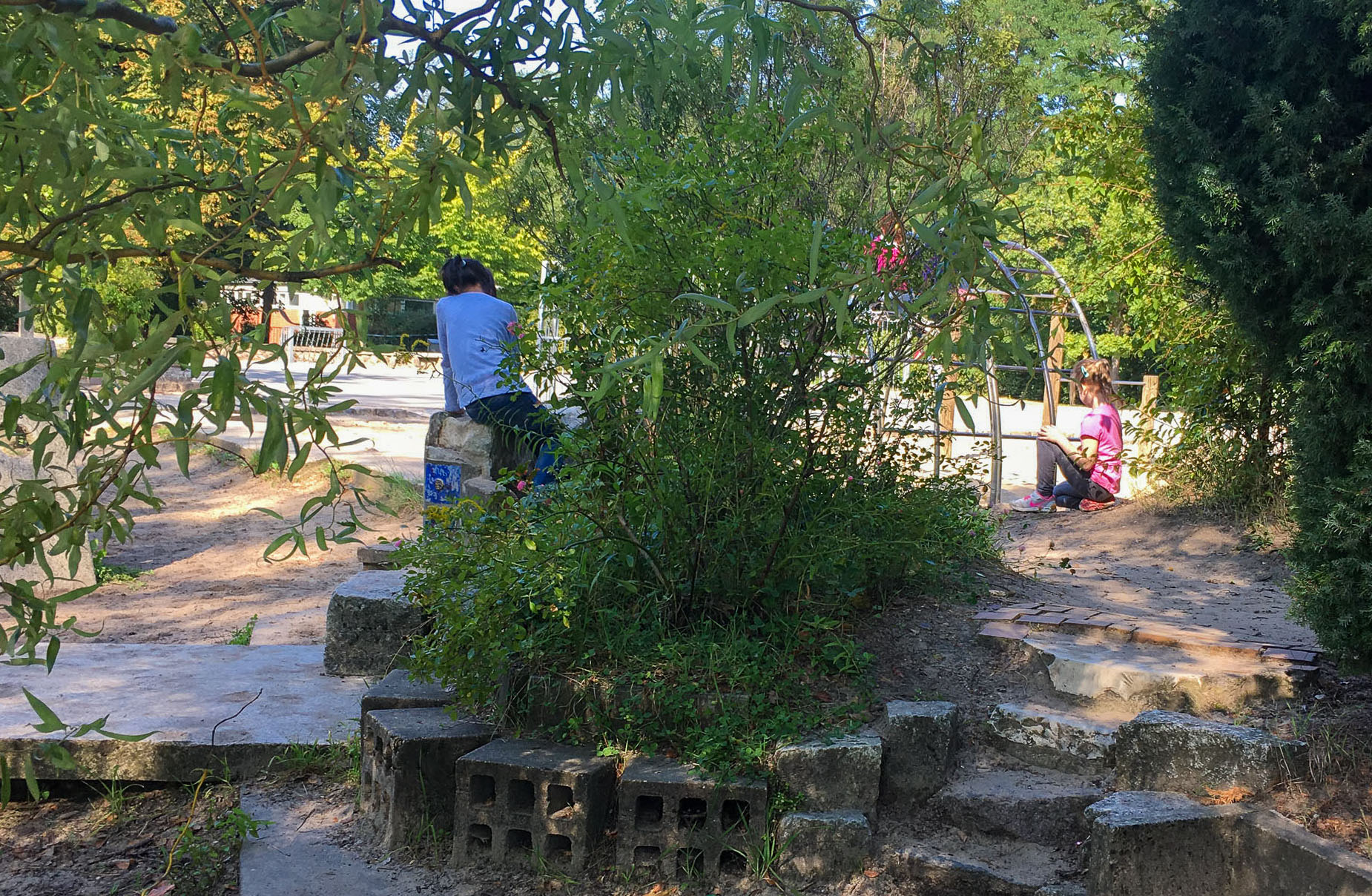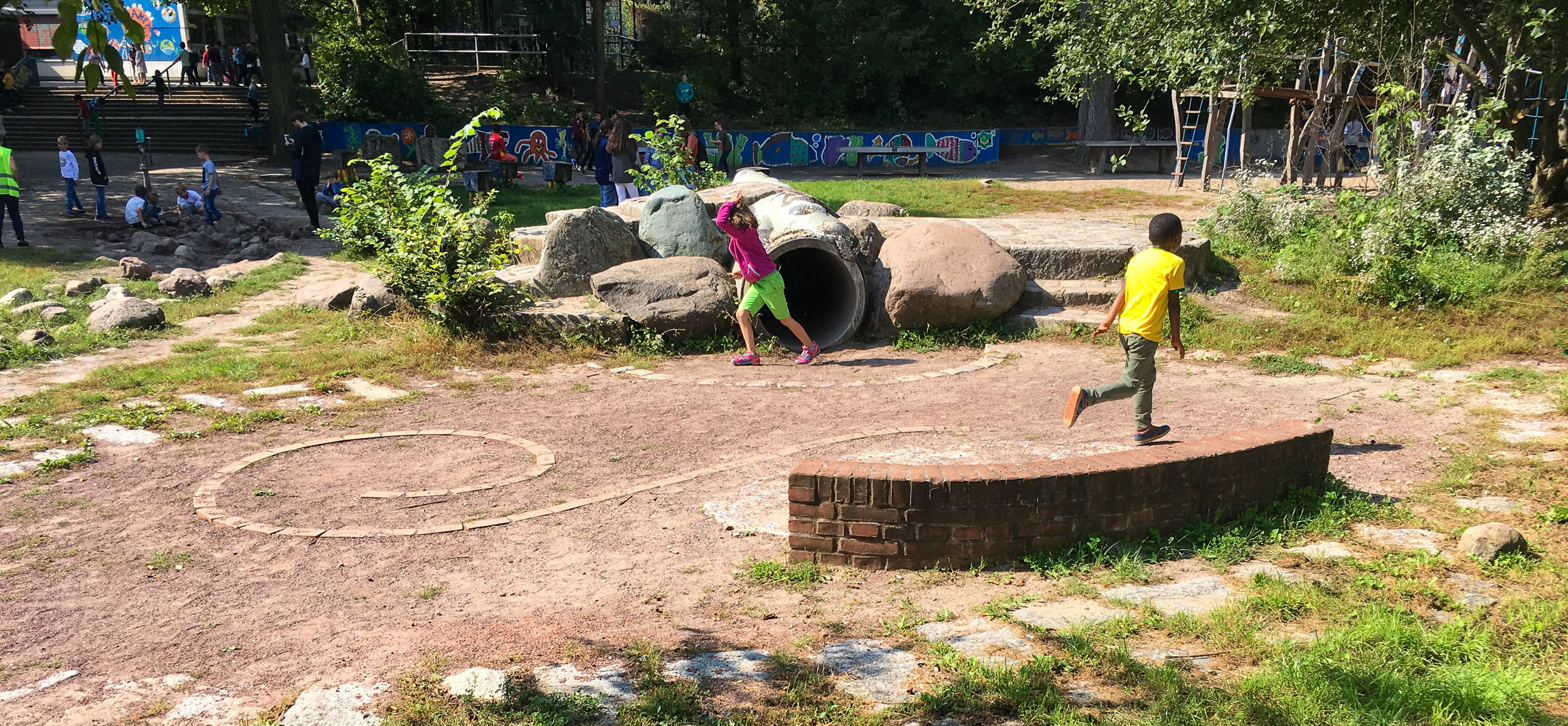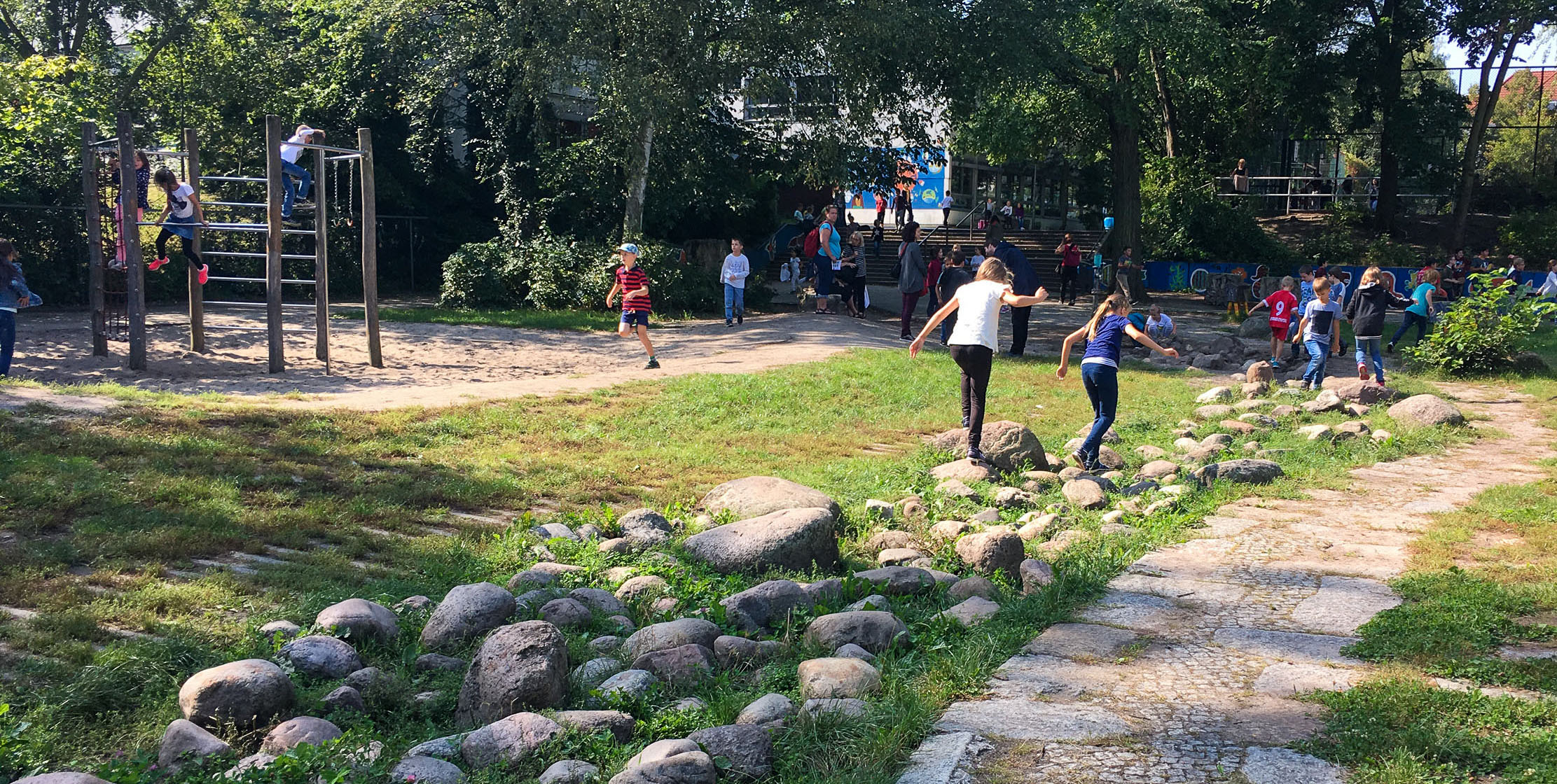Equity and Green Schoolyards
September 16th, 2021
Oakland, CA

Diversity, Equity and Inclusion [DEI] work has become part of conversations around public spaces. How can we as landscape architects create places that serve and lift up marginalized communities?
Green Schoolyards volunteer coordinator Anna Harrison reached out to Katrina Ortiz to talk about volunteering with the Mount Diablo School District’s outdoor learning initiative. Their discussion explores the idea that access to nature in public schools could be an anti-racist response to systemic oppression. Harrison is using the Mount Diablo School District’s green schoolyards as a case study for her Master’s thesis work in Education Leadership. Harrison has a background in educational facilities planning and design, biophilic design and innovative learning environments. Ortiz has extensive experience in the green schoolyards field, working with Trust for Public Land and Green Schoolyards America to create a green schoolyards program for Oakland's public schools.
 HIERARCHICAL STRUCTURES
HIERARCHICAL STRUCTURESSchool structures are usually a reflection of our society's top-down decision-making. Many teachers are hesitant to teach outdoors due to concerns around "losing control" of the kids. This pedagogical concept of being in control is applied disproportionately to students of color, who are suspended and disciplined at substantially higher rates.
 COUNTERACTING THE SCHOOL-TO-PRISON PIPELINE
COUNTERACTING THE SCHOOL-TO-PRISON PIPELINEThe school-to-prison pipeline is so entrenched that students who "misbehave" can potentially be arrested, including a kindergartner in one especially egregious case. Many schools in California also look like prisons - concerns about safety and liability have led to bare asphalt yards surrounded by chain link fences. By creating environments that are less focused on surveillance and more attuned to developmental milestones, kids can roam, explore, and create in the schoolyard.
 NATURE AND WELLNESS
NATURE AND WELLNESSBeing immersed in nature lowers blood pressure and studies have shown that neighborhoods with more trees have better health outcomes. [ Summary of research linked here. ] Some schools have created "cool down" gardens for students who are having a difficult moment. These spaces provide a calming environment with medicinal herbs and other features to promote emotional wellbeing.
Play is also an important aspect of child development - climbing, jumping, running helps to develop balance and body awareness. The freedom to roam isn't afforded to most children these days, especially not in wilderness spaces, so it is essential to bring those natural elements to meet kids where they're at.
 OUTDOOR LEARNING OPPORTUNITIES
OUTDOOR LEARNING OPPORTUNITIESIn addition to providing shade and comfort, green schoolyards give students and educators space on campus to conduct biology experiments, observe seasonal changes, and support pollinators.
 COMMUNITY PROCESSES
COMMUNITY PROCESSESParticipatory design ensures a school community has a say in changes to their schoolyard. Co-creating a space involves in depth community outreach from the very beginning. Schools where parental involvement was central to decision making processes have been successful in implementing schoolyard improvements. The community's dedication and a strong parent leadership committee were instrumental to the success of the Cesar Chavez campus renovation, which began with a grant awarded in 2017.

[ Cesar Chavez Campus - image courtesy of Miller Company ]
See more about Oakland Schoolyards and Cesar Chavez Campus here:
-
Cesar Chavez Campus design
-
Trust for Public Land video about the project
- Oakland School District policy changes around school greening
PLAT volunteering for Emergency Schoolyard Design


[ Berlin schoolyard images photographed by Katrina Ortiz ]
